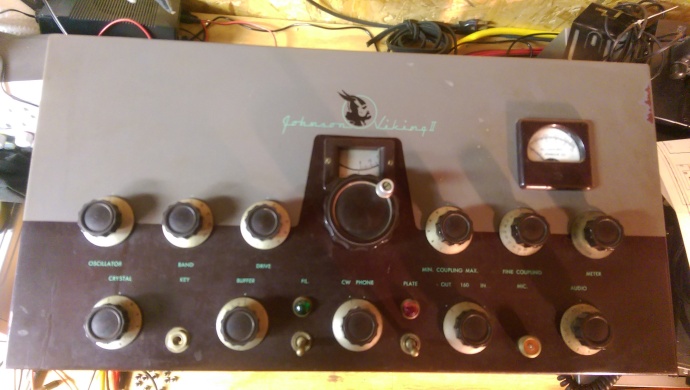I’ve been doing a bit of AM operating of late. This vintage mode if fun to operate and sounds great when the band conditions aren’t too noisy. I’ve also been repairing and tinkering with some old transmitters as mentioned in other posts. One of the highest pursuits of the AM op is to achieve great audio. Many will go to great lengths to buy studio rack gear with pre-amps, compressors, limiters, and EQ. Top off all this hamsexy rack gear with a big old boom mic!
The other part of the equation is to properly adjust the audio modulation. It’s not as simple as watching the ALC meter like on SSB (although it does help). A first step is to look at the RF waveform on an oscilloscope. You want to verify that the wave isn’t flat topping. A modulation monitor can be used to view the modulation percentage. Combine these two together and you get the AMM-SD1 by Radio Engineering Associates. This slick device connects into the feedline and runs in software on the computer. It’s pretty much real-time display shows the RF waveform and the negative and positive modulation percentage peaks.
Seemed like this might be a worthwhile investment for the shack…like I even need an excuse to by cool shack gear! So far it’s confirmed that my AM audio is clean with positive peaks over 120% and negative peaks right at 100%. Right about where it needs to be. I’ve also used it to detect that the Ranger II I’m working on is in need of further inspection. The positive peaks only hit about 40% before the stopping point when negative peaks hit 100%. I never would have found that without the monitor unless trying to make a contact and some OM tells me my signal is crap.
This monitor has already proven to be an asset to my radio operation. I just wanted to share it with my followers and encourage people to give AM a try if you like a little more than UR 59 OM, QRZ. There are frequent AM operating events throughout the year, so there’s no excuse not to lay down some carrier and chat it up.

 The first stage of fixing up this old transmitter is disassembly. When Johnson built their gear they certainly didn’t spare the fasteners. This thing is held together by a ton of slotted head screws. Took forever to remove them all. Fortunately, the cabinet came apart really easy. The hardest part was removing the front
The first stage of fixing up this old transmitter is disassembly. When Johnson built their gear they certainly didn’t spare the fasteners. This thing is held together by a ton of slotted head screws. Took forever to remove them all. Fortunately, the cabinet came apart really easy. The hardest part was removing the front
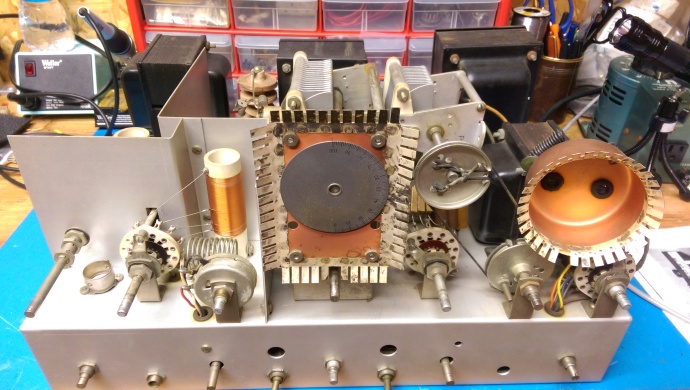 I now have access to the chassis of the beast. I’m impressed with the overall design, construction, layout, and quality. You can really tell these were built to last. The top side will definitely need some scrubbing, but I don’t see rust or corrosion. Of specific interest is the ganged, gear-driven variable inductor/capacitor tuning unit. Not only is it exceedingly grungy, but it’s not operating correctly. I believe this is the only item of concern up top.
I now have access to the chassis of the beast. I’m impressed with the overall design, construction, layout, and quality. You can really tell these were built to last. The top side will definitely need some scrubbing, but I don’t see rust or corrosion. Of specific interest is the ganged, gear-driven variable inductor/capacitor tuning unit. Not only is it exceedingly grungy, but it’s not operating correctly. I believe this is the only item of concern up top.

 I’ll also have to do some checks on the resistors as they’ve probably drifted, too. Some components are more critical than others depending on the particular circuit. This will just take some time to research the usual suspects and start ordering.
I’ll also have to do some checks on the resistors as they’ve probably drifted, too. Some components are more critical than others depending on the particular circuit. This will just take some time to research the usual suspects and start ordering. Here’s a pic of this big honkin’ oil filled cap. No reason to include it except it’s cool. Just another example of the quality put into these rigs. Hoping to get the chassis all cleaned up and the roller inductor functional again. That will complete the first phase of the project. I think the next part will be more fun. I like working with components better than cleaning stuff up. Stay tuned.
Here’s a pic of this big honkin’ oil filled cap. No reason to include it except it’s cool. Just another example of the quality put into these rigs. Hoping to get the chassis all cleaned up and the roller inductor functional again. That will complete the first phase of the project. I think the next part will be more fun. I like working with components better than cleaning stuff up. Stay tuned.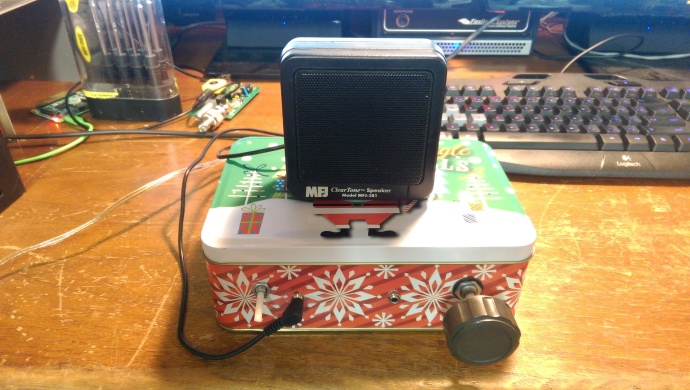
 With the circuit fully complete, this amounted to a one day project to get the basic assembly done. I found a suitable Christmas tin for a cabinet. The majority of my time was spent laying out and marking holes for the board standoffs and all the jacks and pots to be connected. It’s not exceedingly elegant but I
With the circuit fully complete, this amounted to a one day project to get the basic assembly done. I found a suitable Christmas tin for a cabinet. The majority of my time was spent laying out and marking holes for the board standoffs and all the jacks and pots to be connected. It’s not exceedingly elegant but I  was able to accomplish it all with a hand drill, pliars, and a couple wrenches. I chose the metal enclosure because I thought It might provide good shielding. Eventually I’ll probably add a small fan and punch some holes for ventilation. There should also be enough room to add an Arduino, DDS or PLL board, and cool LCD display. I think it would make a perfect radio for portable operation with a battery and 40m dipole at the park.
was able to accomplish it all with a hand drill, pliars, and a couple wrenches. I chose the metal enclosure because I thought It might provide good shielding. Eventually I’ll probably add a small fan and punch some holes for ventilation. There should also be enough room to add an Arduino, DDS or PLL board, and cool LCD display. I think it would make a perfect radio for portable operation with a battery and 40m dipole at the park.
 instructions, reference materials, and purchase info. The product is sourced and shipped out of India and constructed by a local women’s collective that helps provide skills and jobs. They typically arrive in less than a month. Not bad turn around time. Easy ordering with Paypal.
instructions, reference materials, and purchase info. The product is sourced and shipped out of India and constructed by a local women’s collective that helps provide skills and jobs. They typically arrive in less than a month. Not bad turn around time. Easy ordering with Paypal.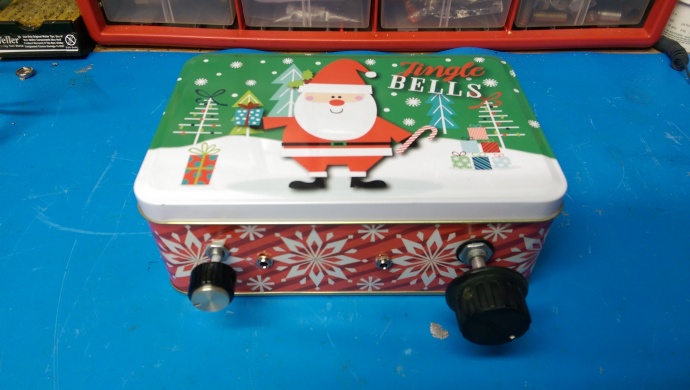
 I got energized to try something new after participation in the
I got energized to try something new after participation in the  iver was a Yaesu FRdx-400. Early 70’s production, and it did pretty well for me, too. I didn’t yet have a dowkey relay so all the switching was done manually. Let me tell you, that’s a lot of work just to complete an exchange! My time was limited, and I made only one contact but I think the hook was set. Time to finally breath new life into this old gear that’s been sitting around cluttering up my shack.
iver was a Yaesu FRdx-400. Early 70’s production, and it did pretty well for me, too. I didn’t yet have a dowkey relay so all the switching was done manually. Let me tell you, that’s a lot of work just to complete an exchange! My time was limited, and I made only one contact but I think the hook was set. Time to finally breath new life into this old gear that’s been sitting around cluttering up my shack.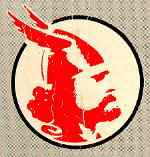 n years ago I purchased a Johnson Viking II transmitter from a good friend and elmer Joel, K2LYC (now SK). I also came home with several other vintage pieces from his extensive collection, but that will become the subject matter of many future posts. The intent was to setup an AM station (Studio B) to accompany my then-modern Icom IC-756 station (Studio A). Somehow a decade passed away and, sadly, so did Joel. I guess I feel like I owe it to him to get this stuff playing again. So, it begins with the transmitter. I’m going to start there because usually they’re simpler. I’ve also had pretty good success fixing others. Fortunately, there’s loads of info available at my fingertips. This is the intro so I’m not going too deep. My plan is to remove the chassis from the cabinet for overall cleaning and inspection. I’ll replace any faulty components and perform only the mods that are proven and considered best practice. No total restoration needed. I’m sure every scratch and scrape tells a story. It’ll never be a mint specimen, just an honest workhorse. Eventually it’ll pair with my Collins 75A-3 (which will probably be the next project). But you see I’m already ahead of myself. Next post will start getting into the real heart of the job. 73!
n years ago I purchased a Johnson Viking II transmitter from a good friend and elmer Joel, K2LYC (now SK). I also came home with several other vintage pieces from his extensive collection, but that will become the subject matter of many future posts. The intent was to setup an AM station (Studio B) to accompany my then-modern Icom IC-756 station (Studio A). Somehow a decade passed away and, sadly, so did Joel. I guess I feel like I owe it to him to get this stuff playing again. So, it begins with the transmitter. I’m going to start there because usually they’re simpler. I’ve also had pretty good success fixing others. Fortunately, there’s loads of info available at my fingertips. This is the intro so I’m not going too deep. My plan is to remove the chassis from the cabinet for overall cleaning and inspection. I’ll replace any faulty components and perform only the mods that are proven and considered best practice. No total restoration needed. I’m sure every scratch and scrape tells a story. It’ll never be a mint specimen, just an honest workhorse. Eventually it’ll pair with my Collins 75A-3 (which will probably be the next project). But you see I’m already ahead of myself. Next post will start getting into the real heart of the job. 73!